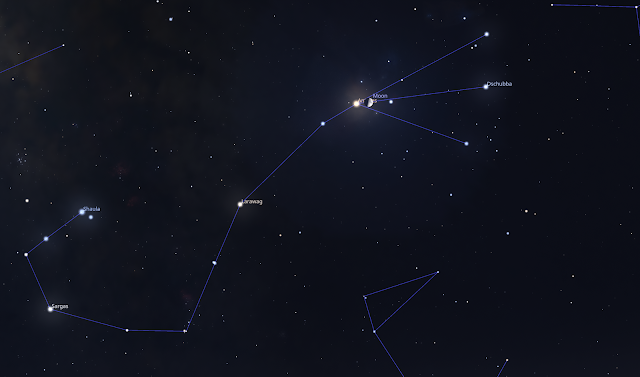Occult of Antares by the Moon

Photo Credit: Stellarium : Scorpius Constellation When you hear the word "occult", what do you think of? Most of us think of the supernatural, dark arts, voodoo, or other such practices. The word "occult" comes from Latin that means "to hide". Occultation in astronomy means when something between me and a distance object blocks my view of that object. Occultations take place all the time with planets, moons, stars, and asteroids. During the solar eclipse, the moon is occulting the Sun. On the evening of August 24th, the bright star Antares was occulted by the Moon. I was unable to view this occultation, but did capture a monochrome image of Antares within the glow of the moon on this night. Antares is the bright star in the middle. Photo Credit: Erik Swindlehurst Antares is located in the Constellation Scorpius. This star is a very large, super red giant star. It is 12 times larger than our own Sun. If placed at the center of our


